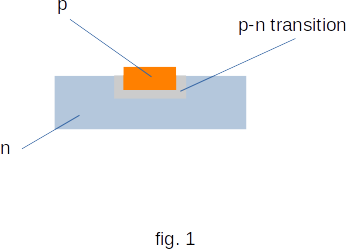From the Electrical current in different environments
118. Semiconductor diode
Two-electrode electronic tubes or semiconductor diodes can be used to rectify electrical current in radio circuits. But semiconductor diodes have several advantages.
In an electronic tube, charge carriers - electrons are generated by thermoelectronic emission. This requires a special source of electrical energy to heat up the cathode filament. In p-n transition charge carriers are formed when an acceptor or donor impurity is added to a crystal. Thus, it is no longer necessary to use an energy source to obtain free charge carriers.
In complex schemes, the energy savings obtained from this is very significant.
Semiconductor rectifiers with the same rectified current are smaller than electronic tubes. As a result, radio circuits on semiconductors are more compact. For this reason, semiconductor receivers (transistor receivers) are much smaller and lighter than tubes receivers.
The noted advantages of semiconductors are particularly significant when used in Earth satellites, spacecraft and small electronic computers.
Semiconductor diodes are made of germanium, silicon, selenium and other substances.
Let us consider the formation of p-n transition in the element of germanium.
Take a crystal of germanium, which has the conductivity of the n-type. In one of the surfaces of the crystal is melted indium. Due to the diffusion of indium atoms in the depth of the germanium monocrystal at the germanium surface, the region with the p-type conductivity is formed. The rest of the germanium crystal, in which the indium atoms have not penetrated, still has the conductivity of the n-type. A p-n transition occurs between two regions with different types of conductivity (fig. 1). In the semiconductor diode, germanium serves as a cathode and indium as an anode.

The p-n transition cannot be obtained by mechanical joining of two semiconductors with different types of conductivity because the gap between the semiconductors is too large. The p-n transition thickness should not be more than the interatomic distances. Semiconductor rectifiers are highly reliable and have a long service life. However, they can only operate within a limited temperature range, approximately \(-70\) to \(+125^0 \,C\).